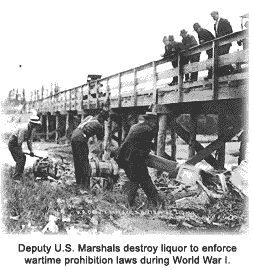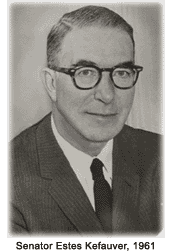Organized crime may be defined as systematically unlawful activity for profit on a city-wide, interstate, and even international scale. The corporate criminal organization is a far cry from the small-scale predations of a Bonnie and Clyde.
Criminal organizations keep their illegal operations secret, and members confer by word of mouth. Gangs sometimes become sufficiently systematic to be called organized. The act of engaging in criminal activity as a structured group is referred to in the United States as racketeering.
A criminal organization depends in part on support from the society in which it exists. Therefore, it is frequently expedient for it to compromise some of society`s upright members — especially people in the judiciary, police forces, and legislature — through bribery, blackmail, and the cultivation of mutually dependent relationships with legitimate businesses. Thus a racket is integrated into lawful society, shielded by corrupted law officers and politicians — and legal counsel. Its revenue comes from narcotics trafficking, extortion, gambling and prostitution, among others.
Labor Racketeering
Labor racketeering is a general term for the misuse of organized labor for criminal purposes. This can consist of exploitation of employers, union members, or both. It comes in various forms. Employers can be bullied into paying for "employees" who don`t work, to pay money to corrupt officials to guarantee labor peace, or to avoid publicity that could be damaging. Union members pay into pension funds that are sometimes managed more for the interests of mobsters than for their retirement incomes.
The Teamsters Union, under leaders Dave Beck and James R. "Jimmy" Hoffa, was widely believed to have allowed organized crime to exercise a great deal of control over its operations. The FBI investigation that followed Hoffa`s disappearance in 1975 concluded, without final evidence, that Hoffa`s murder had been ordered by top leaders of organized crime, who feared that his attempted return to power in the Teamsters would jeopardize their control of the Teamsters pension fund.
The Mafia
Criminal organizations sometimes arise in closely knit immigrant groups that do not trust the local police and other authorities.
The Mafia, also known as La Cosa Nostra (Our Thing), or the Mob, is the umbrella name of several clandestine organizations in Sicily and the United States. "Mafia" was originally the name of a loose association of Sicilians in the middle ages who collaborated for protection and vigilante law enforcement during the Spanish occupation of the island. Local citizens believed they could not trust Spanish law enforcement officials, and so organized their own protection societies that eventually evolved into the Mafia. The confederation later engaged in organized crime. A member of the Mafia is a "mafioso," or "man of honor."
The protector role reached the United States in the early 20th century, where newly arrived Italian immigrants frequently knew no English and clustered in the same neighborhoods. Numerous established Americans were suspicious of new immigrants, particularly those with little grasp of the English language. Some Italians feared that they could not depend on the frequently crooked and intolerant local police for protection, and resorted to the mafiosi instead.
Midway through the 20th century, Mafia influence crested in the United States. A flurry of FBI investigations in the 1970s and 1980s somewhat blunted the Mafia`s power. Despite this, the Mafia and its ilk have become woven into the fabric of the American popular imagination, especially in movies.
The term "mafia" has been generalized to label any sizable group involved in racketeering, such as the Russian Mafia or the Japanese Yakuza. When formally applied, however, "Mafia" refers to the traditional Sicilian/American crime families.
The rise of gangsterism
The Prohibition era of the 1920s gave rise to the organized crime syndicate in the United States. Federal efforts to enforce prohibition, including raids on speakeasies, were countered by well-organized bootlegging operations with national and international connections. A particularly notorious gang of the times was Al Capone`s mob in Chicago. There were also gangs in Detroit, New York and other cities. Wars among gangs, producing grisly killings, frequently made headlines.
 Eventually, the public`s repugnance, given voice by the 1930 Wickersham Commission inquiry, as well as numerous revelations of compromised municipal officials, produced a temporary suppression of political corruption.
When the 1933 repeal of prohibition made buying liquor legal once again, gangs that were still intact resorted to different sources of illegal gain, among them gambling, narcotics trafficking and labor racketeering.
Crime kingpins of the 1930s knew from experience in the previous decade that solid political connections were an advantage, and inter-gang fighting held severe drawbacks. The Syndicate, a close-knit national organization comprising numerous crime leaders from around the country, was forged by Lucky Luciano and Louis Kepke Buchalter. Its underground polity set geographical boundaries, distributed crime profits, and enforced its edicts with the help of Murder, Inc., its hoodlum cohort.
Luciano was arrested, tried, convicted, and later deported to Italy. Buchalter was executed and Murder, Inc. was broken up. With those head blows against organized crime, it was thought by some to be terminated in the United States.
Eventually, the public`s repugnance, given voice by the 1930 Wickersham Commission inquiry, as well as numerous revelations of compromised municipal officials, produced a temporary suppression of political corruption.
When the 1933 repeal of prohibition made buying liquor legal once again, gangs that were still intact resorted to different sources of illegal gain, among them gambling, narcotics trafficking and labor racketeering.
Crime kingpins of the 1930s knew from experience in the previous decade that solid political connections were an advantage, and inter-gang fighting held severe drawbacks. The Syndicate, a close-knit national organization comprising numerous crime leaders from around the country, was forged by Lucky Luciano and Louis Kepke Buchalter. Its underground polity set geographical boundaries, distributed crime profits, and enforced its edicts with the help of Murder, Inc., its hoodlum cohort.
Luciano was arrested, tried, convicted, and later deported to Italy. Buchalter was executed and Murder, Inc. was broken up. With those head blows against organized crime, it was thought by some to be terminated in the United States.
 U.S. Senator Estes Kefauver and his investigative committee disclosed in 1950 and 1951 that the organized crime hydra was still alive — with new heads. A new wrinkle revealed by the committee indicated that the latest crime lords had sealed themselves off from prosecution by hiding behind legitimate business enterprises and avoiding direct involvement with criminal behavior. Attempts to deport top racketeers were among the tactics used by law enforcement following the Kefauver committee revelations.
Police in Apalachin, New York, happened upon a major convocation of crime lords in November 1957. They were from all over the U.S. and overseas. The discovery prompted investigations that laid bare the tenacious power and reach of organized crime in the middle of the 20th century.
Organized crime is lucrative. The 1967 President`s Commission on Law Enforcement and Administration of Justice reckoned that organized crime`s income was twice that of the combined take of all other kinds of criminal behavior.
In 1970, Congress passed the Racketeer Influenced and Corrupt Organizations Act (RICO). Congress`s aim was to neutralize the deleterious effects of organized crime (basically, the Mafia) on the national economy. According to its criteria, the target of the RICO Act (defendant) is the kingpin. The racketeering activity is the unlawful activity in which the Mafia is involved. Thanks to the Mafia family`s long-term involvement in that activity, it constitutes a pattern of racketeering. The government can therefore prosecute the kingpin under RICO and send him to prison — even if he has never directly participated in criminal behavior. The kingpin can be incarcerated because he operated a criminal enterprise.
In 1972, the Knapp Commission revealed connections between organized crime and New York City police, which emphasized the difficulty local police organizations have with steering clear of its intimidating influence.
In 1988, a report on La Cosa Nostra indicated that bribing union and public officials was still going on and conferences to resolve disagreements were held from time to time by the 25 member families.
The structure of recent organized crime evidently resembles that of multinational corporations; indications are that it has diversified and even cultivated a multinational commodities market. Chinese, Latino and other ethnic groups have broken into organized crime in U.S. cities through the distribution and sale of illicit drugs. Such white-collar crimes as sales of phony phone cards, stock swindles and health insurance fraud have been added to the Mob`s traditional loan shark and gambling activities. Meanwhile, such blue-collar crimes as rackets and extortion apparently are on the wane. The latest crimes of choice for racketeering are identity theft and online extortion.
U.S. Senator Estes Kefauver and his investigative committee disclosed in 1950 and 1951 that the organized crime hydra was still alive — with new heads. A new wrinkle revealed by the committee indicated that the latest crime lords had sealed themselves off from prosecution by hiding behind legitimate business enterprises and avoiding direct involvement with criminal behavior. Attempts to deport top racketeers were among the tactics used by law enforcement following the Kefauver committee revelations.
Police in Apalachin, New York, happened upon a major convocation of crime lords in November 1957. They were from all over the U.S. and overseas. The discovery prompted investigations that laid bare the tenacious power and reach of organized crime in the middle of the 20th century.
Organized crime is lucrative. The 1967 President`s Commission on Law Enforcement and Administration of Justice reckoned that organized crime`s income was twice that of the combined take of all other kinds of criminal behavior.
In 1970, Congress passed the Racketeer Influenced and Corrupt Organizations Act (RICO). Congress`s aim was to neutralize the deleterious effects of organized crime (basically, the Mafia) on the national economy. According to its criteria, the target of the RICO Act (defendant) is the kingpin. The racketeering activity is the unlawful activity in which the Mafia is involved. Thanks to the Mafia family`s long-term involvement in that activity, it constitutes a pattern of racketeering. The government can therefore prosecute the kingpin under RICO and send him to prison — even if he has never directly participated in criminal behavior. The kingpin can be incarcerated because he operated a criminal enterprise.
In 1972, the Knapp Commission revealed connections between organized crime and New York City police, which emphasized the difficulty local police organizations have with steering clear of its intimidating influence.
In 1988, a report on La Cosa Nostra indicated that bribing union and public officials was still going on and conferences to resolve disagreements were held from time to time by the 25 member families.
The structure of recent organized crime evidently resembles that of multinational corporations; indications are that it has diversified and even cultivated a multinational commodities market. Chinese, Latino and other ethnic groups have broken into organized crime in U.S. cities through the distribution and sale of illicit drugs. Such white-collar crimes as sales of phony phone cards, stock swindles and health insurance fraud have been added to the Mob`s traditional loan shark and gambling activities. Meanwhile, such blue-collar crimes as rackets and extortion apparently are on the wane. The latest crimes of choice for racketeering are identity theft and online extortion.